Coda: 'Deafness is not a costume you can put on,' says film director
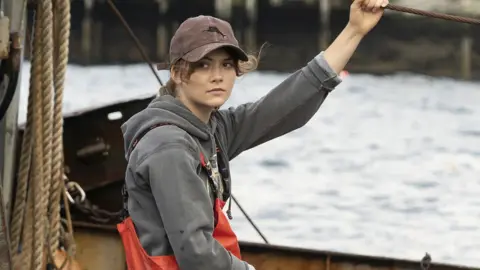 Apple TV+
Apple TV+The director of a multi award-winning film about a Coda - the acronym for child of deaf adult - says she was determined to cast deaf actors in her film, saying, "Deafness is not a costume you can put on."
Coda is directed by Siân Heder, who made 2016's Tallulah, starring Elliot Page, and was also a writer-director on the Netflix series Orange is the New Black. It's the story of 17-year-old Ruby, the only hearing person in the Rossi family.
Used to her responsibilities of acting as an interpreter, Ruby finds it hard to choose between her loving family's fishing business and fulfilling her own dream of going to music school.
"I think that it would have been such a missed opportunity to not use deaf actors regardless of it being the right thing to do," Heder explains.
"It was so important to me creatively because they'd lived that experience. Deafness is not a costume you can put on. And there are so many aspects to that culture and experience you can't play, unless you've lived it."
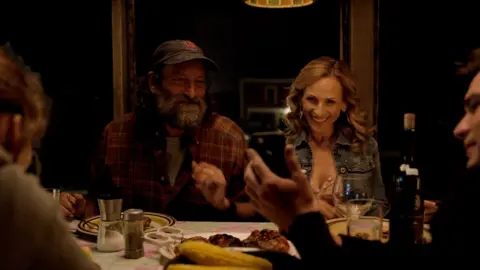 Apple TV+
Apple TV+Ruby is played by Emilia Jones, the British star of Netflix's Locke & Key, but unlike the original French film Coda is based on, La Famille Bélier, the cast who play the other Rossi family members are all deaf.
They include Marlee Matlin, who won a best actress Oscar in 1987 for the film Children of a Lesser God - the only deaf performer in history to do so - and Troy Kotsur, who starred in 2019's The Mandalorian, where he choreographed an adapted form of sign language for the Disney+ series.
Although deafness and hearing loss has been portrayed in recent movies such as Sound of Metal, A Star is Born, A Quiet Place and Wonderstruck, Heder says on-screen representation has been lacking. In the UK, the RNID reports that one in five adults are deaf or have hearing loss.
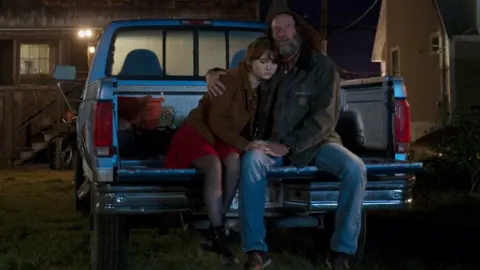 Apple TV+
Apple TV+"I do think my actors have missed out," she says. "Troy Kotsur has been working on stage for many years, he's an absolutely brilliant unexplored actor, he's been a total chameleon in everything I've seen him in.
"The opportunities are so rare as there has been so little representation. The more we get writers together in writers' rooms to start to think, 'What if this character was deaf?' Or, 'What if this character had a disability or was in a wheelchair'?' That's when representation starts to become more mainstream - as it needs to be."
Nearly half of Coda's script is American Sign Language and both Heder and Jones started learning it as soon as they became involved with the film. Heder explains she needed to be proficient, because she felt using an interpreter on set was too much of a communication barrier between her and her cast.
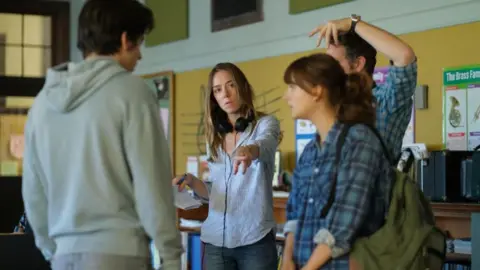 Apple TV+
Apple TV+"When we got shooting, I found that directing is so specific, it's so much about the connection between director and actor and forging trust, I found it difficult working with an interpreter," she says.
"So, we were all in agreement - I would sign with them directly and the interpreter would stand by in case. It brought me into a whole new way of working that was so connected, to be honest it's going to be hard to go back to doing anything else. Signing is so physical, it taps into your visceral sense of how to communicate an idea."
"This movie changed my life," Jones says. "I spent nine months preparing before flying to Massachusetts, where the movie's set, and it allowed me to learn a skill for life. It's such a beautiful language - although I've learned American Sign Language, I was going to say now I need to learn British Sign Language too.
"It was interesting to portray my feelings through a different medium, I guess when I act normally you internalise through your eyes - but with this, less is not more. It's so physical, you have to inhabit what you're saying, it's a very emotional language. I felt quite vulnerable and it was challenging."
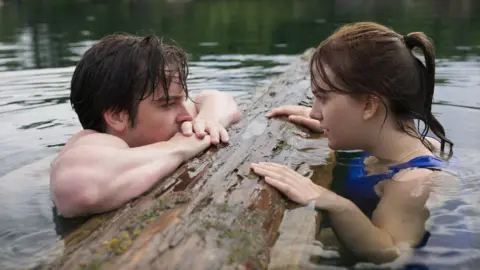 Apple TV+
Apple TV+Jones researched the role by speaking to real life Codas - who also interpreted for her on set.
"It's very different to being a young carer, and I've played one of those in the past and researched that role too," she explains.
"But they are both groups of young people shouldering responsibility. In the case of a Coda, you are part of two worlds and sometimes you can feel that you don't belong to either, so that made Ruby a very layered character."
"Everyone has different experiences of being a Coda as well," Heder adds. "There's often the sense of responsibility but also sometimes of power.
"That's something I also discussed with Emilia, that Ruby's self-worth is wrapped up in being an important person in her family, she's needed in so many situations. She's conflicted about leaving for music school because she's afraid to leave, not because they're telling her to stay. That was an important distinction."
Coda made film history by winning four prizes, including the Audience Award, when it competed in the US Dramatic Competition at this year's Sundance Film Festival - and was also showcased this month at the Sundance London event.
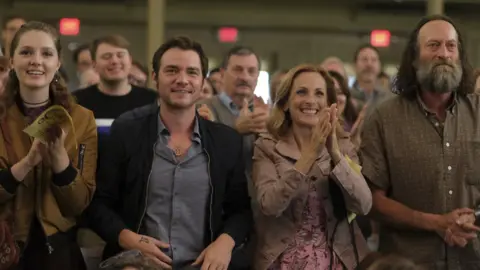 Apple TV+
Apple TV+Apple TV+ bought the film for $25m (£18m) and the movie is now being tipped for Oscar nominations.
Heder says she's excited that movie audiences will have a chance to see a coming of age story which happens to be set in a deaf family.
"We mostly all know what it is to have an embarrassing sex talk with our parents, or an embarrassing dad, and all of these scenes will be way more embarrassing in American Sign Language as they're so visual," she says.
"So, there'll be universal scenes you relate to, but there's also a cultural specificity in that the details of this experience might be new to you. Many cinema audiences have never seen an American Sign Language conversation on screen and this could be a powerful moment - you can look at the Rossi family and say, 'This could be my family, they just happen to be deaf.'"
Coda is released in UK cinemas and on Apple TV+ on 13 August.
